Sol LeWitt: Non-visual Structures
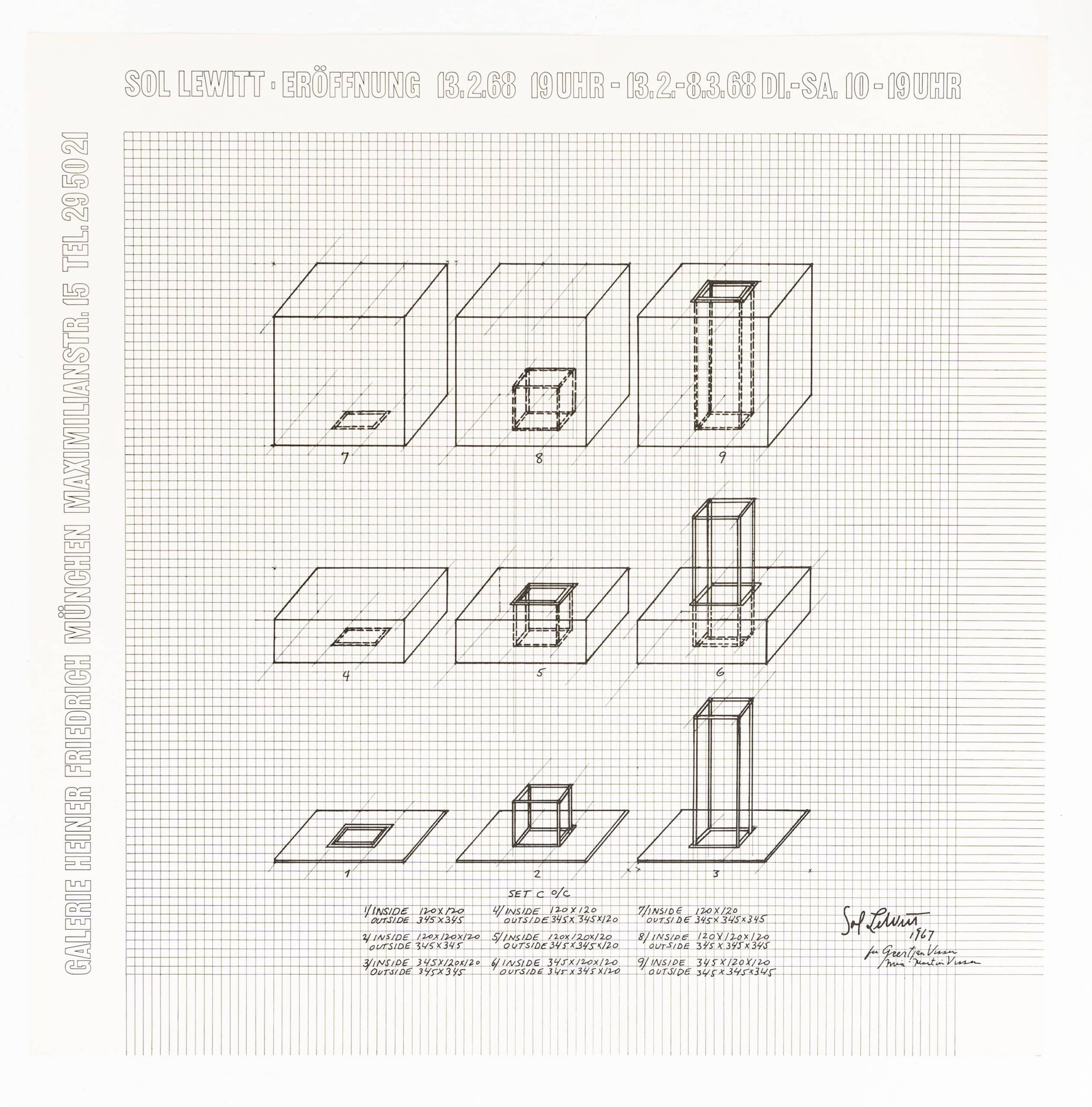
One of the most particular of LeWitt’s preoccupations is his long-standing desire to infer the existence of unseen or interior facts or objects. The concept of encasing in a block of cement the Cellini cup or the Empire State Building runs counter to the unsecretive quality of his open frameworks, though it certainly relates to the earlier enclosed spaces. He is concerned to control space to the extent of negating it, by means of a grid or clear enclosure. In a similar manner he could control, or negate, any form or object known to man, no matter how allusive or potent a symbol, by imprisoning it in a block of stone and returning it to a state of matter alone, from which spirit is excluded. This is the contemporary reverse of Michelangelo’s concern to free the figure, or humanity, trapped within the inert stone, and provides rather obvious contrasts between the individualism of the Renaissance and the anti-individualism of the electric age. Yet in another sense, it attests to the need for a core, unseen and imprisoned or not […]
The major inconsistency forced upon LeWitt by the visualness of his art is an aspect of the enclosure concept that has haunted him all along. When a smaller (interior) open form is enclosed by a closed form that completely envelops it, is the invisible contained form there or not? Given all four models [Set A, B, C, D], its existence is certainly implied. Yet in order to convey this in unambiguous terms, LeWitt would have to label his work or make known the underlying concept by diagrams or manual. An exhibition of concrete blocks might or might not contain Cellini’s cup or the Empire State Building. This interests LeWitt as an idea rather than a realizable project. But the four models demand that everything be where it is supposed to be.
Excerpted from Lucy Lippard, ‘Sol LeWitt: Nonvisual Structures’ [1967] in Lucy Lippard, Changing: Essays in Art Criticism (New York: E. P. Dutton, 1971), 164–5.
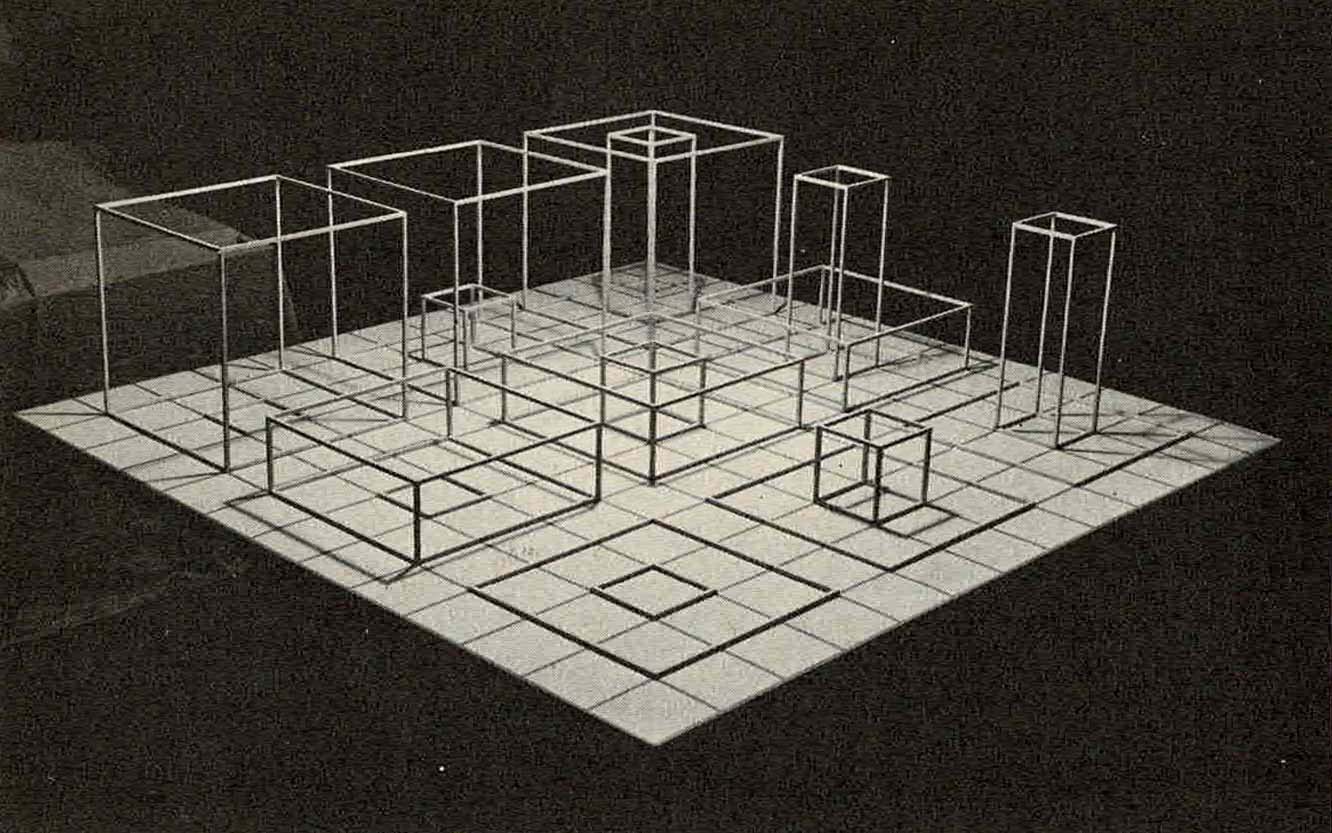
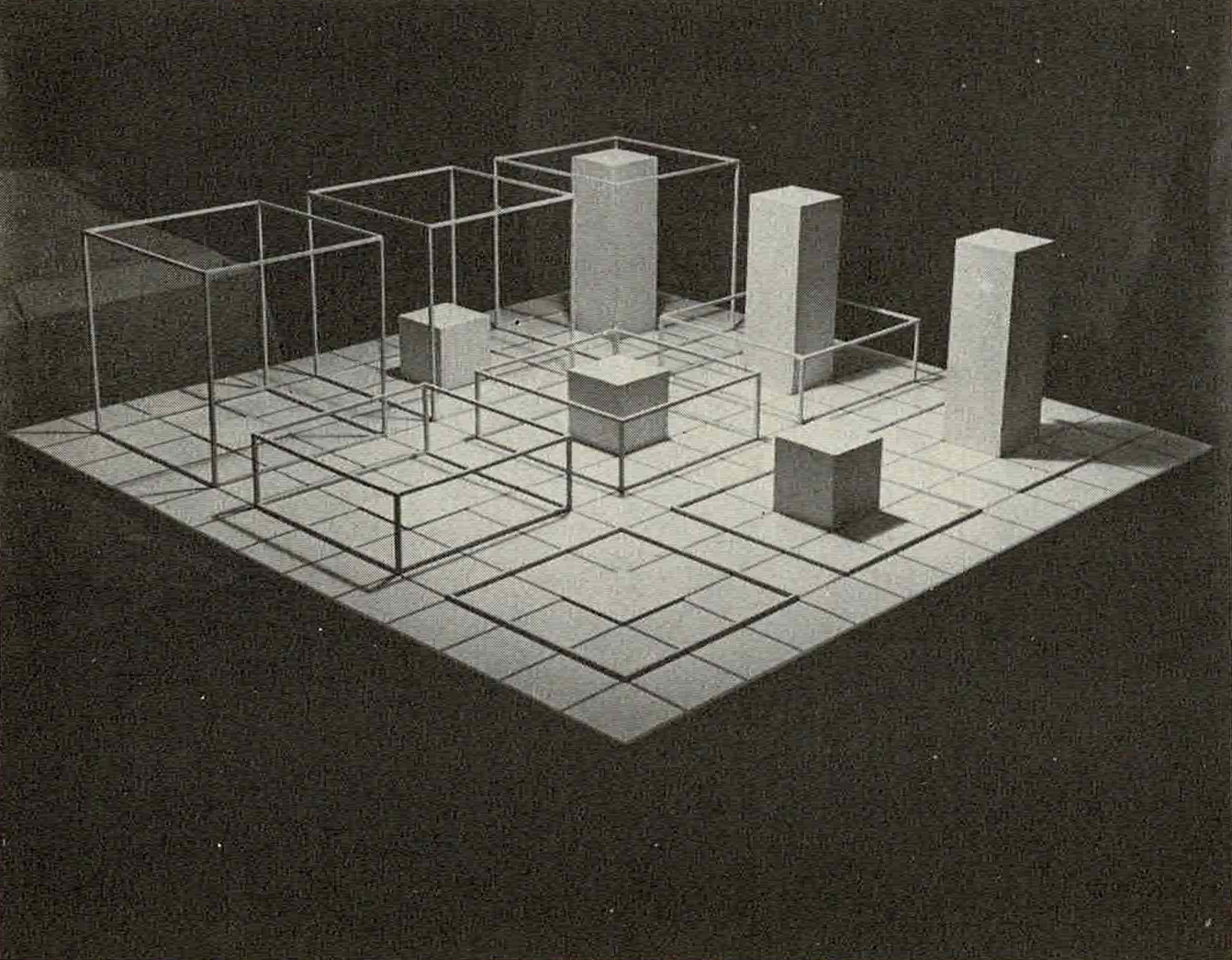
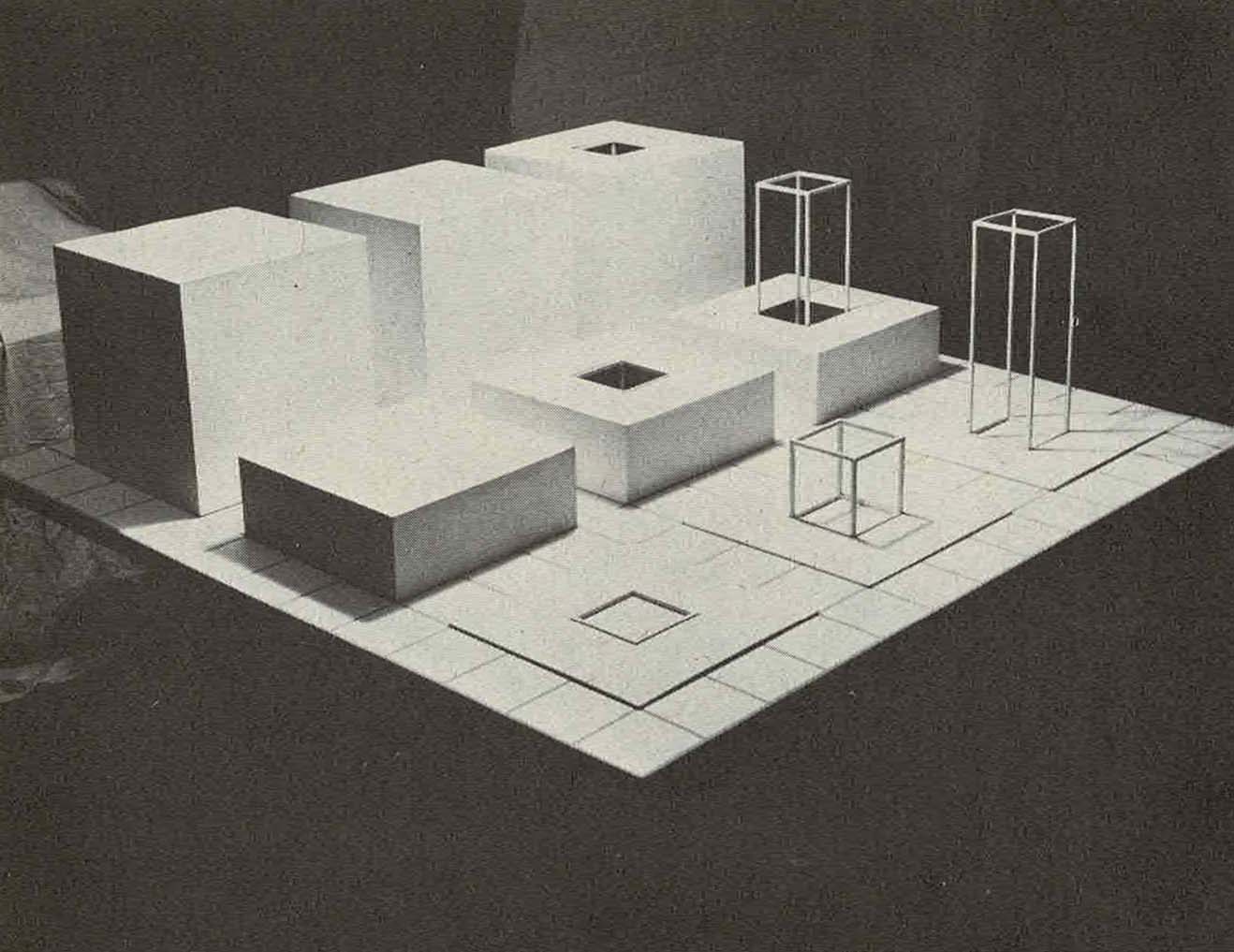
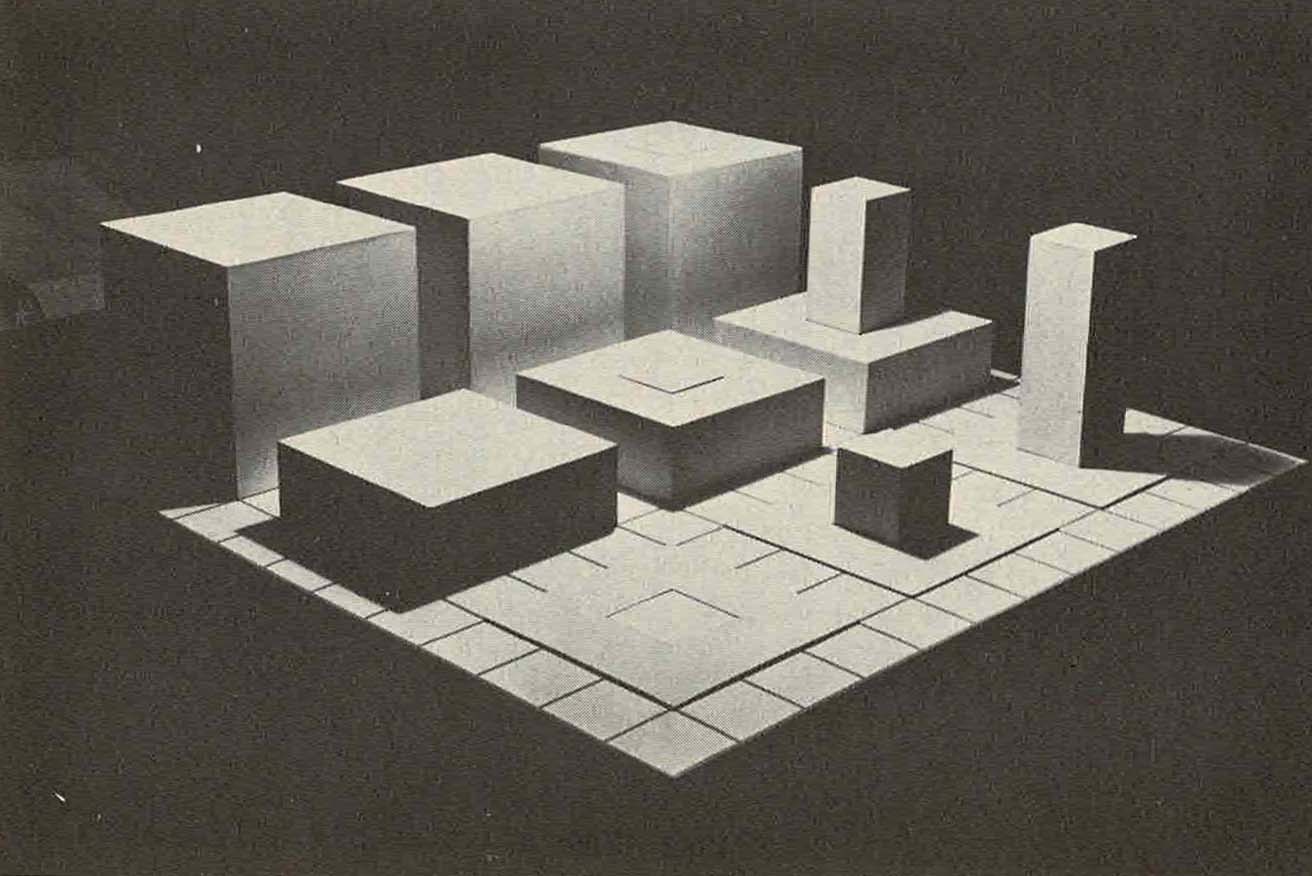

– Nicholas Logsdail